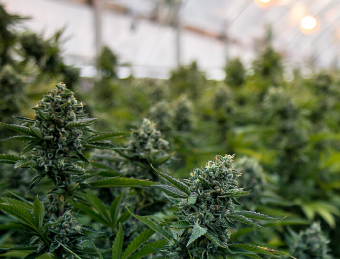
The world has awakened to the potential of the Cannabis plant. To be more precise, the humankind interest in this plant and its properties has been growing at least since the beginning of civilization. Along the years it has been given many names, and used for the most diverse industries that any plant can be used for. From fibers and building materials, high nutricional seeds, cosmetics, oils and dried flowers
In the last decade, the big pharmacy industry started an in-depth research on the different effects and benefits of cannabinoids on the human body and its finally starting to be recognized by its medicinal properties and not only its more ludic effects of “getting high” on THC. This interest in its pharmacologic properties has brought a lot of regulations that affect growers and patients, by increasing its accessibility to the masses that need it and by focusing on the safety, informational content, pharmacovigilance and uniformity of the prescribed medicine.
Merit has to be given to multiple growers that have along the years tried different methods of growing it and a big part of the hydroponics and indoor cultivation methods have derived from the work of this growers, focused on growing the largest yields by paying attention to plant science and providing the plants with all they need to achieve its full potential. Something that evolved to nowadays be called controlled environment agriculture.
In this article we will talk a bit about this new market of medicinal cannabis and what it is needed to have into account if you are to enter this market and be successful in it. We won’t do an in depth evaluation of the different strains, cannabinoids profiles, health benefits on different diseases, different consumption methods or the effect of the different cannabinoids in the human body either individually or as a full spectrum (all cannabinoids together). In turn we’ll write about the different factors affecting the cultivation of this plant for medicinal purposes.
Starting a new grow
When you want to start a new grow you will have to invest in a facility that includes all the equipment required for its cultivation and processing needed to turn it into a valuable, marketable product that fills the properties required to be available and safe to patients. One of the first questions you need to ask yourself is: what type of final product do I, or my buyer want? This questions are very important and it doesn’t mean you will be stuck to a specific product, but it will help you plan better the methods, protocols and equipments, so that nothing is missing and no bad surprises happen either during its manufacturing or commercialization. It’s also crucial to plan ahead so that all the different stages and rooms make sense together and with your ultimate goal and final product.
Cultivation Methods
This plant is somewhat very simple to grow. This means you can achieve success either growing it indoors, outdoors or in a greenhouse, by having high tech equipment or by simply letting it grow on its own. But if you want to sell it as a medicine, or as a brand that will be known worldwide, you will need to be sure that what you are presenting to the customers is constant overtime, its safe and valuable.
You can grow it with hydroponics or in soil and inside these two areas there are many choices to make regarding plant density, plant size, fertilization, pests management, light and climate control, processing methods… among many others.
The most important stages
Germination and Cloning – This are the two possible methods for starting your crop. You can either start with seeds or import clones, or germinate seeds to produce clones. The most common procedure is to track down the genetics you want to produce, find some quality femi seeds, germinate them and register their initial stages. The objective will be to end up selecting your best plants which you will want to replicate and create a brand around. Once you have done this you need to keep those plants in a vegetative mode from which you can start to take clones, to this plants we call Mother Plants. The number you will need of mothers is directly related to the number of plants you will want to harvest, taking in mind that you will probably discard a few of them for not achieving the same development as the others. For a successful rooting, be sure to have trained workers taking and pruning clones correctly, keep your plants under the correct light intensities with high levels of humidity. It is always advised to use a rooting hormone in order to shorten their development and moving faster to the next stage.
Vegging – After the rooting phase, when the clones taken from your mother plants have enough roots to get to the next step, its time to transplant them to your vegging area. This area should be equipped and ready to provide 16 to 20 hours of lights with the correct spectrum and intensity.
Flowering – If you have control over lighting schedules, you can trigger this stage when your vegging plants have achieved your predetermined goal of for example height, number of nodes, time, … if you do not have control over the lighting (growing outdoors), you will need to wait until it happens naturally. At this stage you should decrease your grow space humidity levels, in order to increase the transpiration rates and increase nutrients uptake to increase your flowers growth. Another reason for controlling humidity during this stage concerns pests, to be more precise: fungus, which can in a matter of days turn your most productive yield into something impossible to be marketable.
Bucking and Trimming – This stage can either be before or after drying. Bucking means separating the flowers and leaves from the stalks. Trimming means removing the maximum amount of sugar leaves from the flowers. Both these processes can be done manually or mechanical, which will define the amount of trained workforce that its required and consequently the number of plants harvested that you can handle daily.
Drying
Drying methods also vary according to each grower, meaning you can dry full plants or whole branches in hangers or you can separate them into buds and dry them shelfs. You can do a “natural” drying or you can place your harvest into a controlled environment room where you can set with precision your drying time. The latter is the most common when dealing with a final product that must maintain a certain profile harvest after harvest. A controlled environment room also gives you the opportunity to create different drying recipes which have a great effect on the cannabinoid profile.
Curing
This processing stage is many times skipped when growing in large commercial facilities, but it can do wonders for your final product. It will affect the cannabinoid profile, and really make the odour of your plants stand out. The reason it is most often skipped is due to the need of extra rooms, equipment and time.
Packaging and Storage
The final step! If you got here you surely have done a great job. But it is not over! All your work can vanish if you don’t pay special attention to this stage. This can happen for many reasons which include packaging a not properly dried product, using a package that doesn’t rightfully protect the product, labelling it wrong or incompletely … The same goes with storing your packages which should pay special attention to the climate inside the room and the acess control and security of such room.
Light
Since cannabis is a light loving plant, there are many benefits in providing it as much of it as you can but always in line with the rest of the factors affecting it. The light you can achieve with full Sun light, can´t be replicable indoors in a efficient way since your bills in electricity would be unsustainable for a growing business. This is why most growers either opt by growing in greenhouses or outdoors but there are factors beyond light that will also affect you plant growth such as heat, cold , humidity , pests , nutricion , airflow, photoperiod among others that you should also pay close attention since they all need to be in balance.
Cannabis can be grown in as quick as 3 months or less from seed to harvest which means you can do multiple harvest annually that will for sure help you have a quicker return on your investment. But for this you will need to control light schedules to mimic the time of the year when day time is equal or smaller that nights, meaning when you achieve the 12/12 h of day and night in order to achieve flowering plants. As you might correctly assume, this is impossible to do more than once in outdoor grows, and only possible in greenhouses if you have a way of cutting excess light hours during spring and summer and by providing supplemental lighting during autumn and winter.
Climate
You cannot have light without heat, or darkness without cold … but you can be prepared for both! When cultivating indoors and in order to achieve maximum yield per m2, you will have to stuff your grow rooms with a lot of powerful lights (something around 250-1000 W/m2) which will produce a lot of heat the needs to be removed before you cook your plants. So you should be prepared to have in place a way of treating your air and bring it back to optimal levels. High light levels also means higher plant productivity and consequently higher transpiration rates that will make your room very humid representing one of the most compromising and underlooked factors that affect your plant growth.
In a greenhouse you will find the same problems when the powerful sun hits your cover, and you will also need to reduce high temperature levels either by exchanging air with the exterior (if possible), by misting water , by shading your plants, circulating cool piped water near the floor, using better greenhouse cover materials, circulating air, among many other ways each with its pro’s and cons
When the cold hits, you can more easily heat your greenhouse with complete combustion gas burners, circulating hot water/fluid from a buffer deposit, closing the shading or blackout curtains and again by already having in place a correctly dimensioned greenhouse for the local climate and a greenhouse cover with the best thermal properties that still allow high contents of light hitting your plants, while keeping it cool inside during the day and preventing the heat to escape at night.
Licensing an Operation in Europe
Since the goal is to produce a medicine, you will be tied to the same regulations as any other you might find at your farmacy, with the added challenge of being a natural product produced under variable conditions. Some of the terms you are sure to cross when planning a medicinal cannabis facility are:
GMP- Good Manufacturing Practices, measures and procedures for the correct manufacturing of medicines, related to all stages of its production, that aims to assure uniformity, homogeneity, consistency and safety.
GAP – Good Agricultural Practices, a set of guidelines that your grow facility, growers and their measures must follow and have in place in order to justify a good behaviours in terms of pest management, fertilizing, water treatment, potencial emissions and other factors that represent a sustainable (environmental, social and economical) and clean produce.
SOP – Standard Operating Procedure, a set of protocols that dictate each procedure done in the process of producing a medicine.
Traceability – Collection of all data from start to packed product that allow to trace back a certain batch and all the procedures that were applied in its manufacturing
Clean Rooms – Zones free of any pollutants or pests, with rigid parameters for air quality.
